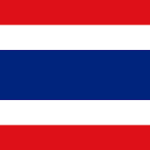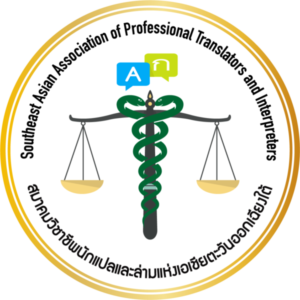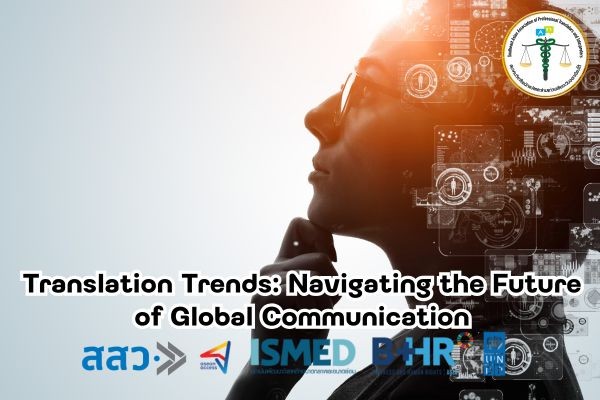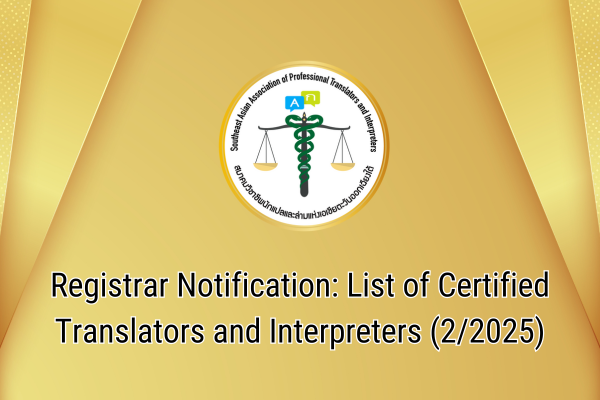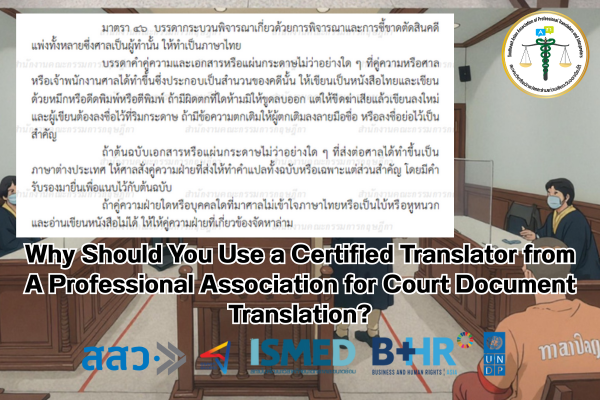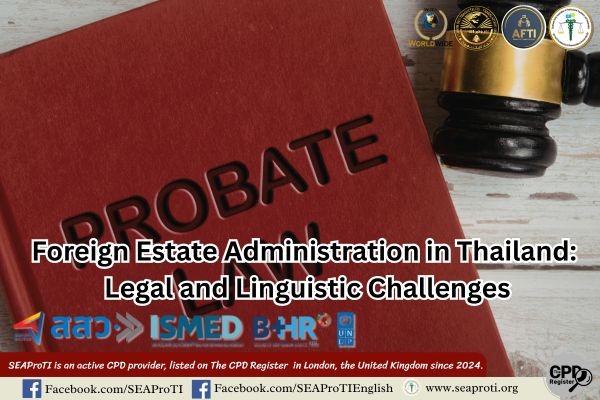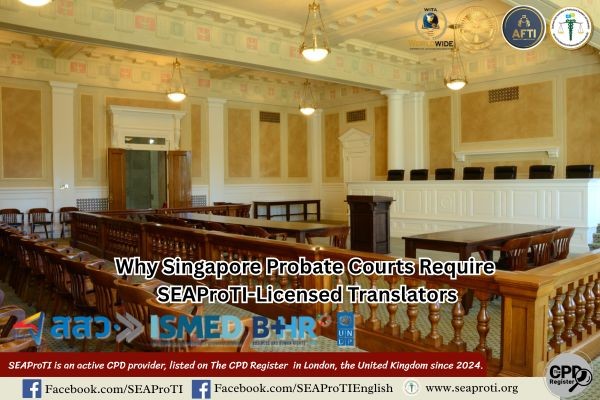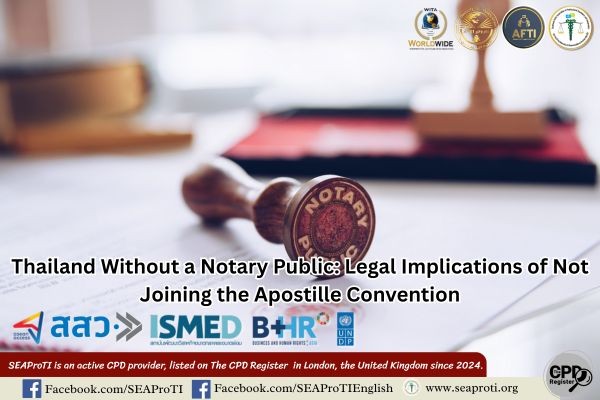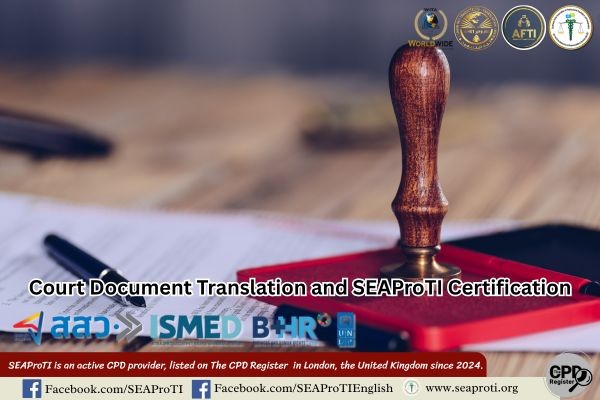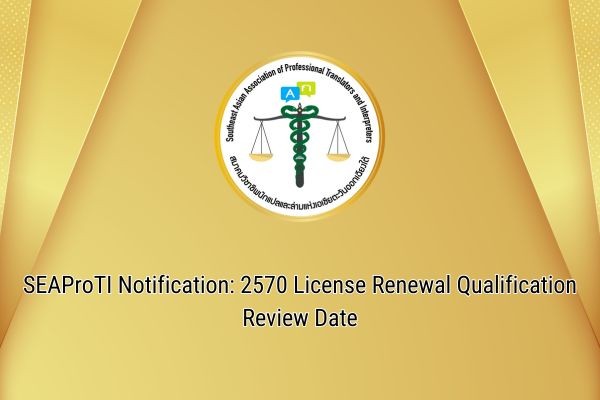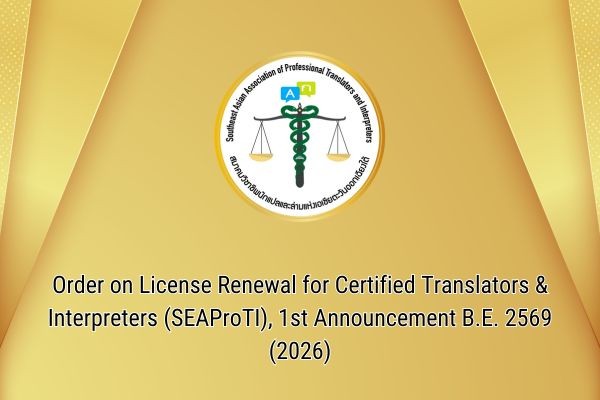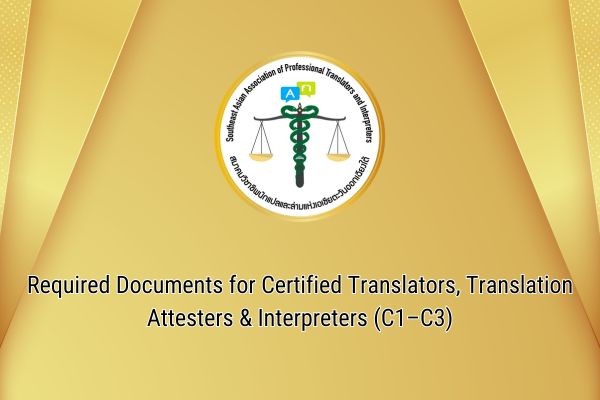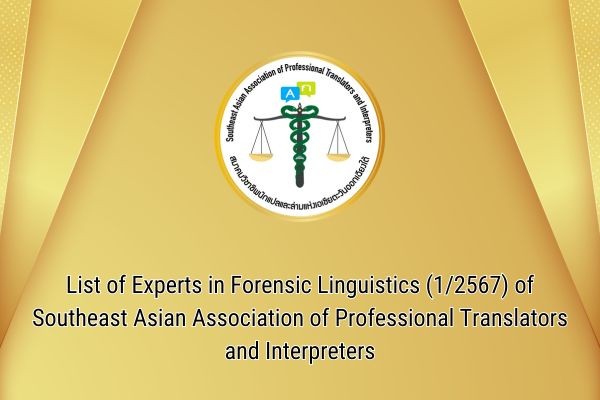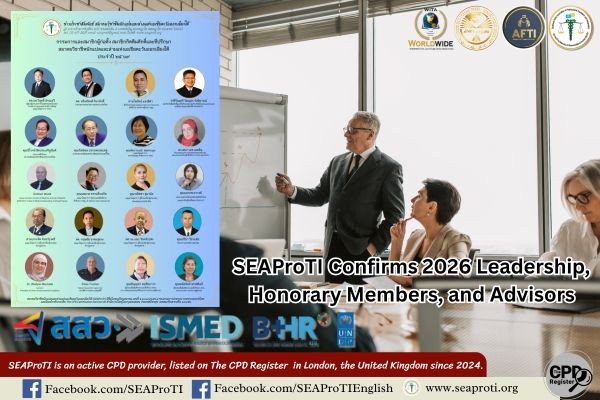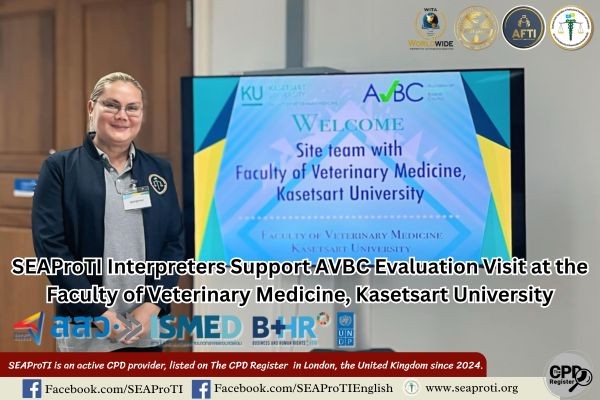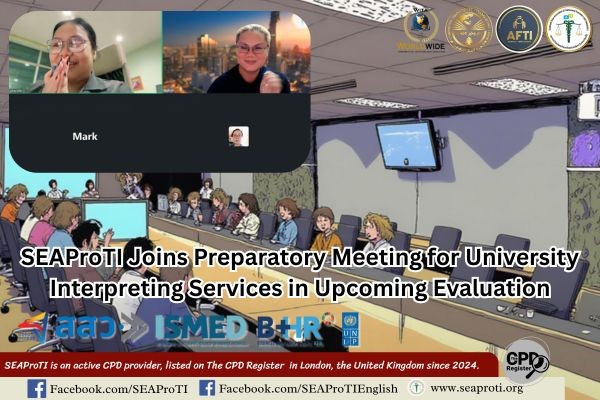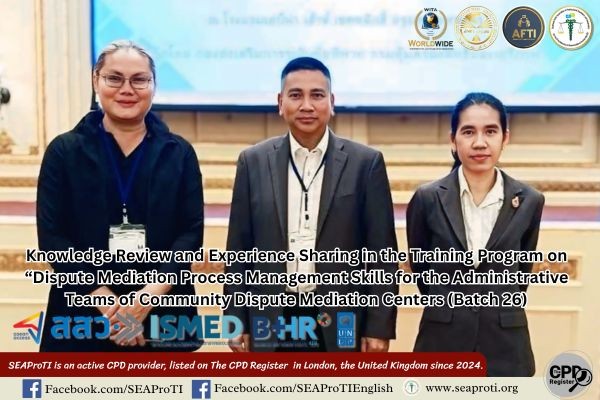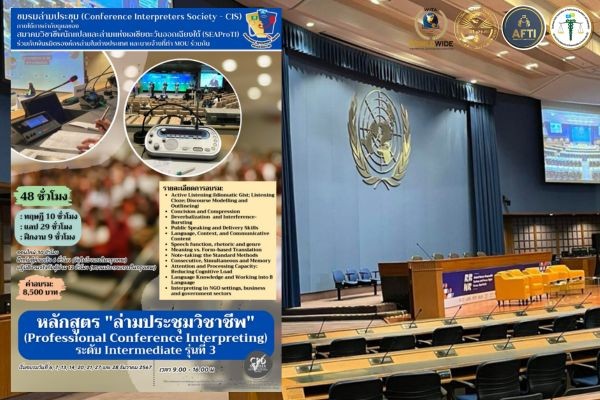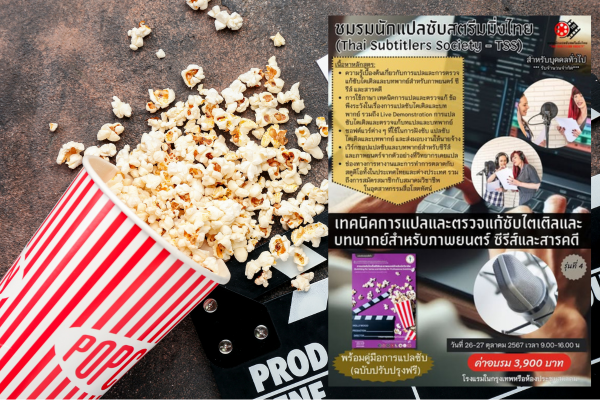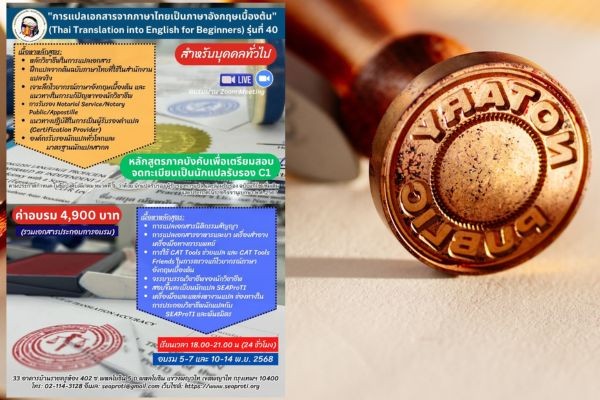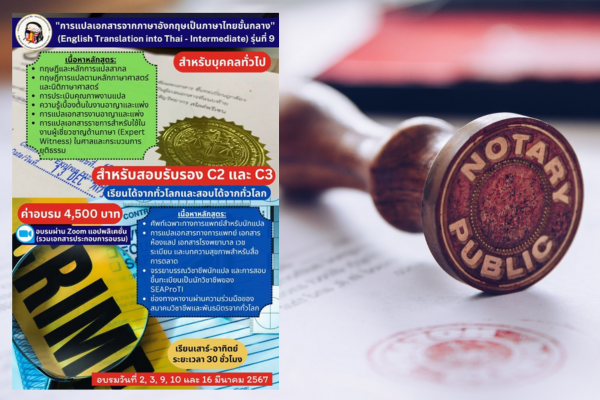Translation Trends: Navigating the Future of Global Communication
5 May 2025, Bangkok – In 2025, the translation industry is undergoing a pivotal transformation, driven by rapid technological innovation and shifting global demands. These emerging trends are reshaping not only the tools translators use but also the ways in which they collaborate, operate, and uphold professional ethics.
Here are five key trends defining the future of translation:
1. Adaptive AI and Neural Machine Translation (NMT)
AI-powered translation technologies are becoming increasingly sophisticated. Neural Machine Translation (NMT) systems now offer context-aware, culturally sensitive outputs, and can learn continuously from user feedback. Rather than translating word-for-word, they analyze real-world language use and adapt accordingly, offering translations that closely resemble natural human expression.
2. Human-AI Collaboration
Technology is not replacing translators; it’s empowering them. By working alongside AI, professional linguists can produce content faster while maintaining high quality. This collaboration bridges the gap between speed and accuracy—human insight remains vital for capturing tone, nuance, and cultural relevance that machines still struggle to interpret.
3. Hyper-Localization
Translation today goes beyond language—it’s about truly connecting with the target audience. Brands are increasingly adopting hyper-localization strategies, adapting content to regional dialects, cultural references, and local preferences. This ensures their messages resonate deeply within each specific market.
4. Real-Time Multilingual Communication
Advanced AI tools now support real-time translation across various digital platforms, such as video conferencing, messaging apps, and live events. This allows global teams to interact seamlessly, even when speaking entirely different languages, breaking down barriers in international collaboration.
5. Ethical AI and Data Privacy
As AI becomes more integrated into translation workflows, questions around ethics and privacy grow more urgent. Organizations are placing greater emphasis on transparency, responsible data usage, and user control. Both developers and translators must commit to ethical standards to avoid risks related to bias, misuse, or violations of personal data.
Conclusion: When Technology and Humanity Intersect
In a world of constant change, the future of translation lies in the harmony between innovation and human judgment. Translators, language professionals, and global organizations that embrace these shifts, while remaining grounded in professional integrity, will lead the way toward effective, inclusive, and responsible global communication.
SEAProTI’s certified translators, translation certification providers, and certified interpreters:
The Southeast Asian Association of Professional Translators and Interpreters (SEAProTI) has officially announced the criteria and qualifications for individuals to register as “Certified Translators,” “Translation Certification Providers,” and “Certified Interpreters” under the association’s regulations. These guidelines are detailed in Sections 9 and 10 of the Royal Thai Government Gazette, issued by the Secretariat of the Cabinet under the Office of the Prime Minister of the Kingdom of Thailand, dated July 25, 2024, Volume 141, Part 66 Ng, Page 100.
To read the full publication, visit: the Royal Thai Government Gazette
แนวโน้มการแปล: ก้าวข้ามขีดจำกัดสู่อนาคตของการสื่อสารระดับโลก
5 พฤษภาคม 2568, กรุงเทพมหานคร – ในปี พ.ศ. 2568 อุตสาหกรรมการแปลกำลังอยู่ในช่วงเปลี่ยนผ่านครั้งสำคัญ โดยมีเทคโนโลยีเป็นแรงขับเคลื่อนหลัก ผสมผสานกับความต้องการทางสังคม วัฒนธรรม และธุรกิจที่หลากหลายมากยิ่งขึ้น แนวโน้มใหม่ ๆ เหล่านี้ไม่ได้เพียงแต่ส่งผลต่อเครื่องมือที่นักแปลใช้ แต่ยังเปลี่ยนรูปแบบการทำงาน ความร่วมมือ และจริยธรรมของวงการด้วย
ต่อไปนี้คือ 5 แนวโน้มสำคัญที่กำลังหล่อหลอมอนาคตของการแปล:
1. ปัญญาประดิษฐ์เชิงปรับตัว และการแปลด้วยระบบประสาท (Neural Machine Translation – NMT)
เทคโนโลยีการแปลด้วย AI มีความแม่นยำมากขึ้น ด้วยระบบที่สามารถเข้าใจบริบท วิเคราะห์ความหมายเชิงวัฒนธรรม และเรียนรู้จากข้อเสนอแนะของผู้ใช้อย่างต่อเนื่อง NMT ไม่ได้เพียงแปลคำต่อคำ แต่สามารถ “เรียนรู้” การใช้งานภาษาจริงในสถานการณ์ต่าง ๆ และพัฒนาให้สอดคล้องกับภาษามนุษย์อย่างแท้จริง
2. ความร่วมมือระหว่างมนุษย์กับ AI
เทคโนโลยีไม่ได้มาแทนที่นักแปล แต่ทำหน้าที่เสริมพลังให้พวกเขาทำงานได้รวดเร็วและแม่นยำยิ่งขึ้น ในโลกที่เนื้อหาต้องผลิตในปริมาณมากและหลากหลาย ช่องว่างระหว่าง “ความเร็ว” กับ “คุณภาพ” จึงถูกร่นลงด้วยการทำงานร่วมกันระหว่างมนุษย์กับ AI นักแปลมืออาชีพยังคงมีบทบาทสำคัญในการตรวจสอบบริบท วัฒนธรรม และอารมณ์ที่เครื่องจักรยังเข้าไม่ถึง
3. การแปลแบบเจาะจงเฉพาะพื้นที่ (Hyper-Localization)
ไม่ใช่แค่ “แปลภาษา” แต่คือ “เข้าถึงหัวใจของผู้ฟัง” แบรนด์ต่าง ๆ หันมาใช้กลยุทธ์ hyper-localization โดยแปลเนื้อหาให้สอดคล้องกับสำเนียงท้องถิ่น ภาษาถิ่น และบริบททางวัฒนธรรม เพื่อสร้างความผูกพันกับผู้บริโภคในแต่ละพื้นที่อย่างลึกซึ้งมากขึ้น
4. การสื่อสารหลายภาษาระบบเรียลไทม์
AI ที่พัฒนาแล้วสามารถรองรับการแปลแบบเรียลไทม์ผ่านแพลตฟอร์มต่าง ๆ เช่น การประชุมทางวิดีโอ แอปพลิเคชันส่งข้อความ หรือแม้แต่การสนทนาสด ด้วยฟีเจอร์นี้ ธุรกิจระดับโลกสามารถสื่อสารกันได้อย่างลื่นไหล แม้จะพูดภาษาต่างกันอย่างสิ้นเชิง
5. จริยธรรมของ AI และการคุ้มครองข้อมูล
ในขณะที่ AI มีบทบาทมากขึ้น คำถามด้านจริยธรรมก็ยิ่งทวีความสำคัญ องค์กรต่าง ๆ เริ่มหันมาให้ความสำคัญกับความโปร่งใส สิทธิในการควบคุมข้อมูลของผู้ใช้ และหลักการใช้งาน AI อย่างมีจริยธรรม นักแปลและนักพัฒนาเครื่องมือจำเป็นต้องยึดมั่นในความรับผิดชอบ เพื่อไม่ให้เทคโนโลยีกลายเป็นเครื่องมือทำลายความเป็นส่วนตัวหรือสร้างอคติทางภาษา
สรุป: เมื่อเทคโนโลยีจับมือกับมนุษย์
ในยุคที่ทุกอย่างเปลี่ยนแปลงอย่างรวดเร็ว ความสามารถในการประยุกต์ใช้เทคโนโลยีควบคู่ไปกับวิจารณญาณของมนุษย์จะเป็นหัวใจของความสำเร็จ นักแปล ผู้ให้บริการภาษา และองค์กรระดับโลกที่ยืดหยุ่น พร้อมรับการเปลี่ยนแปลง และยืนหยัดในจริยธรรมวิชาชีพ จะเป็นผู้ขับเคลื่อนอนาคตของการสื่อสารที่มีประสิทธิภาพ ครอบคลุม และเป็นธรรม
เกี่ยวกับนักแปลรับรอง ผู้รับรองการแปล และล่ามรับรองของสมาคมวิชาชีพนักแปลและล่ามแห่งเอเชียตะวันออกเฉียงใต้
สมาคมวิชาชีพนักแปลและล่ามแห่งเอเชียตะวันออกเฉียงใต้ (SEAProTI) ได้ประกาศหลักเกณฑ์และคุณสมบัติผู้ที่ขึ้นทะเบียนเป็น “นักแปลรับรอง (Certified Translators) และผู้รับรองการแปล (Translation Certification Providers) และล่ามรับรอง (Certified Interpreters)” ของสมาคม หมวดที่ 9 และหมวดที่ 10 ในราชกิจจานุเบกษา ของสำนักเลขาธิการคณะรัฐมนตรี ในสำนักนายกรัฐมนตรี แห่งราชอาณาจักรไทย ลงวันที่ 25 ก.ค. 2567 เล่มที่ 141 ตอนที่ 66 ง หน้า 100 อ่านฉบับเต็มได้ที่: นักแปลรับรอง ผู้รับรองการแปล และล่ามรับรอง
